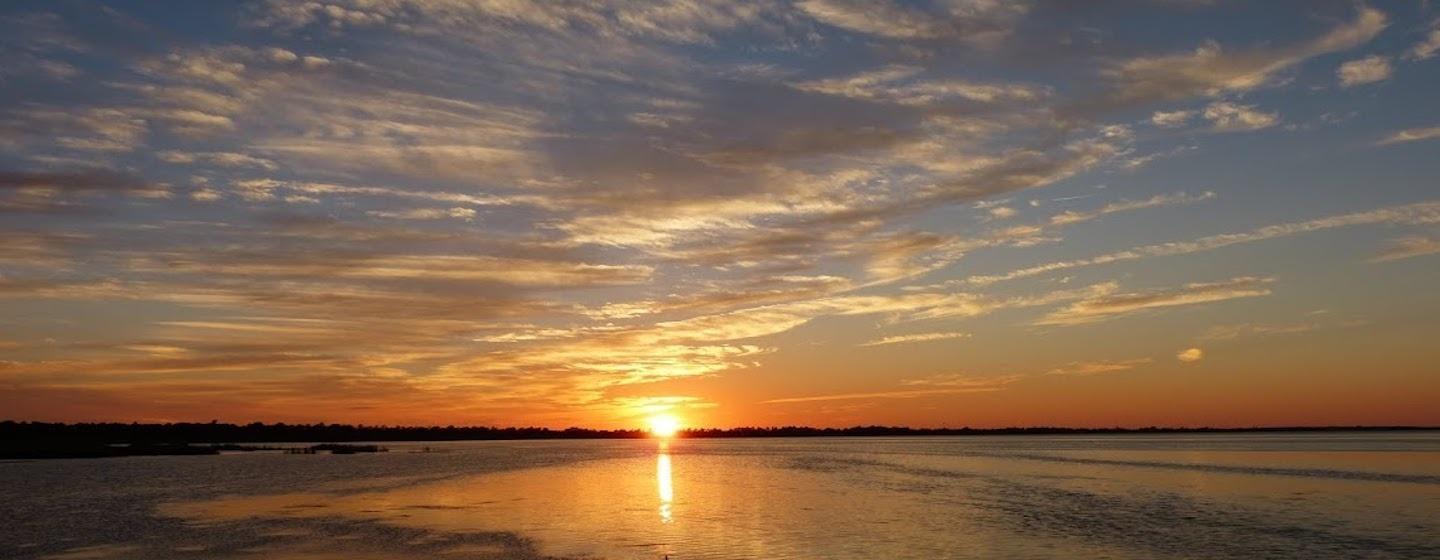NC State Study Provides New View of How Storms Change Coastal Landscapes


It almost goes without saying that a major storm can devastate a barrier island. But until now, nobody had developed a way to quantify just what that meant to a landscape.
Now, researchers at North Carolina State University have crafted a methodology to quantify the changes in a barrier island’s landscape after a major hurricane strikes.
The study focused on Pea Island National Wildlife Refuge in the Outer Banks."
“The methodology that we’ve developed here could be used to help quantify changes on barrier islands anywhere,” said Beth Sciaudone, Research Assistant Professor of Civil, Construction and Environmental Engineering at NC State. “And working with regional wildlife experts can help us understand what those land cover changes mean for habitat."
The study utilized detailed, color-infrared images of the island that were taken every year from 2011 through 2018. The images allowed the team to track changes in land cover across the island. The images were also used to create terrain models that let researchers assess changes in topography across the island.
The land cover was then divided into categories such as beach, marsh, estuarine pond, vegetated dune. Each amount of land type was then quantified and then tracked on how it changed over time. For example, there were five acres of vegetated sand dune in an area for a few years but after a storm flattened the area it was converted into an estuary over a period of two years.
However, in quantifying the land, especially with the effects of Hurricane Irene in 2011 and Hurricane Sandy in 2012, researchers discovered some interesting relationships between storms, wildlife, and wildlife habitat.
It turns out that a lot of what happens to the landscape of a barrier island depends on which direction the storm is coming from and how it strikes the island.
Hurricane Irene hit Pea Island from the Pamlico Sound to the west, while Hurricane Sandy hit the island from the Atlantic Ocean to the east. Both storms created massive changes in land cover. But how long those changes lasted, as well as the impact of those changes varied.
It took several years for the vegetation to recover after Hurricane Sandy wiped out shrubs and grasses and left behind long stretches of bare sand. But on the sound side of the island, Hurricane Irene fundamentally changed the areas hydrodynamics, which created new and larger habitat for shorebirds."
“We already knew that bare sand is good wildlife habitat for many coastal species, but this work shed light on how storms create habitat and how long that habitat lasts,” said Sciaudone. “It will also help us better understand how natural processes as well as human infrastructure projects affect coastal wildlife habitat.”
Refuge managers say the information will help guide management decisions in the future, especially now the NC Highway 12 is being relocated away from the refuge.
“Evaluating these habitat changes will help us prioritize resource protection and restoration actions,” said Rebecca Harrison, Pea Island Refuge Wildlife Biologist with the U.S. Fish & Wildlife Service and a co-author of the study.
The paper, “Land cover changes on a barrier island: Yearly changes, storm effects, and recovery periods,” is published in Applied Geography.